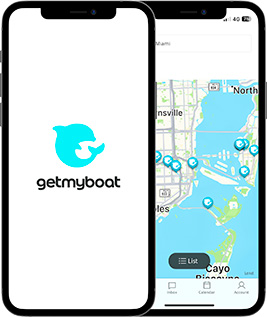Marina del Rey is one of California’s top boating destinations, offering a perfect blend of scenic beauty, world-class facilities, and easy access to the Pacific Ocean. As the largest man-made small-craft harbor in North America, it features nearly 5,000 boat slips, making it a haven for recreational boaters, sailors, and luxury yacht charters alike. The harbor’s calm, protected waters are ideal for beginners and experienced captains, while its proximity to Santa Monica Bay provides quick access to ocean adventures such as whale watching, deep-sea fishing, and coastal cruising.
If you’re planning to operate a charter boat through a platform like Getmyboat or otherwise commercially in Marina del Rey, you must ensure full compliance with local, county and federal rules. All operators are responsible for:
- obtaining the proper registration, permits, business license and docks/berths for commercial use;
- ensuring vessel and captain meet licensing, inspection and insurance requirements;
- using approved facilities for commercial pick-ups/drop-offs; and
- abiding by noise, environmental, docking, navigation and zoning rules.
Here is our guide to the steps and requirements specific to Marina del Rey.
Marina del Rey is an unincorporated community under Los Angeles County Department of Beaches & Harbors (DBH) oversight, in Los Angeles County. Commercial charter operations must comply with federal laws (e.g., United States Coast Guard — USCG), state laws (California) and county/harbor-specific regulations.
Secure an Approved Commercial Dock or Slip
- Commercial operations generally cannot operate from a private “home slip” or from the public launch ramp/dinghy jack-up areas. The home slip is usually not permitted for commercial use.
- According to DBH’s “How to Establish a Legal Boat Charter Business in Marina del Rey (July 2024)” handout: charter businesses must operate from a lease parcel in MDR that allows such commercial use and have zoning or discretionary zoning permits as noted in the parcel map.
- The handout lists specific lease parcels where charters are permitted (both “ministerial” and “discretionary” permit types) and notes that DBH approval is required.
- Because of demand and limited slips, wait times and sub-lease challenges exist for securing a commercial berth.
Tip: Before investing in vessel, marketing or charter operations, confirm availability of an approved berth and ensure that your intended pick-up/drop-off location is cleared for commercial use.
Obtain the Business Licence & County Registration
- If you’re operating commercially, you must obtain a business licence and register with Los Angeles County (Treasurer & Tax Collector’s Office) or through DBH as required.
- Note: for operations such as a “water taxi” or other frequent pick-up/drop-off service, the county may require you to secure an approved pickup/drop-off location prior to issuing the business license.
- Also check zoning permits: the DBH handout lists contacts for zoning (Coastal Permits Section at Department of Regional Planning) which handles the charter-use zoning in the marina.
Ensure Vessel & Crew Compliance
- The vessel must be inspected and approved by the USCG (or meet USCG standards for commercial charter vessels). Historically, a UPV (Uninspected Passenger Vessel) sticker via USCG Auxiliary was required for charter operations in MDR.
- The captain must hold a valid USCG license appropriate for the size and type of vessel and number of passengers.
- Commercial insurance covering the vessel and operations is required.
- Environmental / harbor rules apply: e.g., MDR is a no-discharge harbor (marine/porta-potty waste must be retained on board and pumped out).
Pay Fees and Meet Operational Conditions
- Commercial operations may face a county docking / use fee (in previous versions: ~6% of gross or as stipulated) and pick-up/drop-off location fees charged by the marina or facility.
- Operations must abide by hours of use: in past guidance commercial charters allowed between 6:00 a.m. and 10:00 p.m. daily. (Double-check current rules with DBH or Harbor Master.)
- Abide by specific county codes and harbor regulations (e.g., for docks, anchoring, mooring, etc.). For example, anchoring is not permitted in certain harbors; the speed limit within MDR is 5 mph/no-wake.
Environmental, Safety & Harbor Compliance
- Dock and harbor rules: MDR’s published harbor rules specify things like: vessels must not block pump-out stations; hull cleaners must be certified in Best Management Practices for copper pollution; anchoring is not permitted; no items left/stored on docks; noise must be kept to minimum 10 p.m.–7 a.m.
- Make sure you are up to date on the required hull-cleaning certifications, pump-out obligations, waste disposal, and other harbor-specific environmental rules.
- Stay aware of navigation controls and channel rules in the entrance and within the marina (e.g., anchoring prohibitions in entrance channel, permitting for races/special events).
Key Contacts & Helpful Organizations
- Zoning Permits: Coastal Permits Section, Department of Regional Planning – email coastalpermits@planning.lacounty.gov or (213) 974-0051.
- Business Licence Section: Treasurer & Tax Collector’s Office – businesslicense@ttc.lacounty.gov or (213) 974-2011.
- Asset Management / Leaseholds: DBH, Asset Management Division – (424) 526-7737.
- Harbor Master / Sheriff’s Station, MDR: 310-482-6000.
- Consider joining a trade group such as Charterboat Operators of Marina del Rey (COMCA) which can provide operator-specific guidance and networking.















